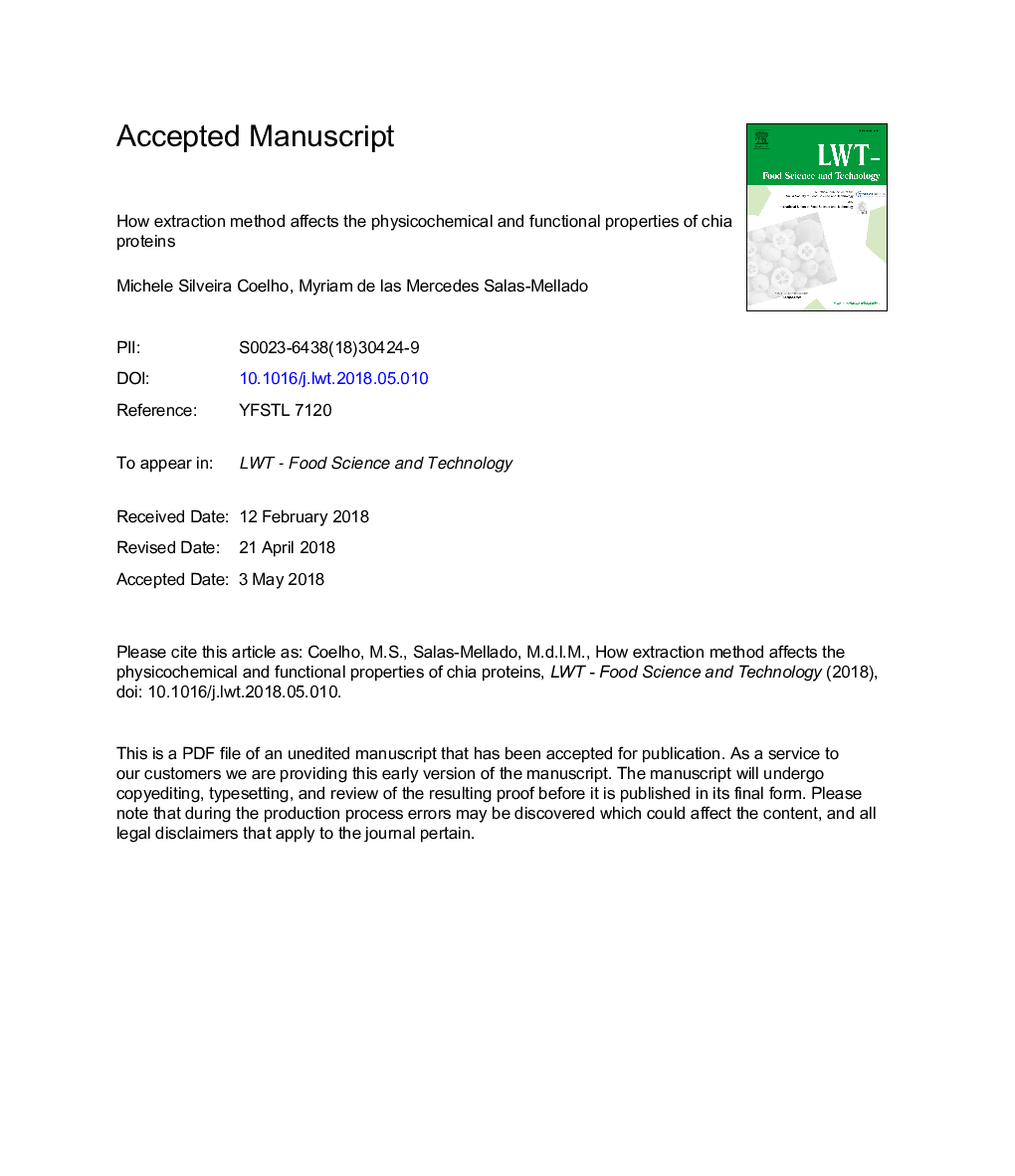| Article ID | Journal | Published Year | Pages | File Type |
|---|---|---|---|---|
| 8890333 | LWT - Food Science and Technology | 2018 | 30 Pages |
Abstract
Partially defatted chia flour (CF) is a by-product of chia oil production. Here we aimed to determine how the choice of extraction method affects the physicochemical and functional properties of chia proteins. Chemical (chia protein concentrates [CPC1 and CPC2]) and dry fractionation (producing a protein-rich fraction [PRF]) methods were used, and the physicochemical and functional properties of the extracted proteins were tested. The protein content of the tested CF was 36.6%. The protein content of the PRF, CPC1, and CPC2 extracts were 49.7, 70.9 and 74.1% respectively. The chia protein extracts mostly consisted of glutelins. Although the PRF had the lowest protein content of the extracts, it presented good functional properties. The dry fractionation method is simpler than the tested chemical methods. Based on our findings, we propose that the optimal choice of chia extraction method is dependent on the desired product.
Keywords
Related Topics
Life Sciences
Agricultural and Biological Sciences
Food Science
Authors
Michele Silveira Coelho, Myriam de las Mercedes Salas-Mellado,
